The most photographed building in Shetland must be… The Lodberry. If you are one of the Jimmy Perez’s fans you will recognise this iconic scene. And for those of you who don’t know Jimmy yet, he is a detective inspector from Ann Cleeves’ drama Shetland, that has become a worldwide sensation
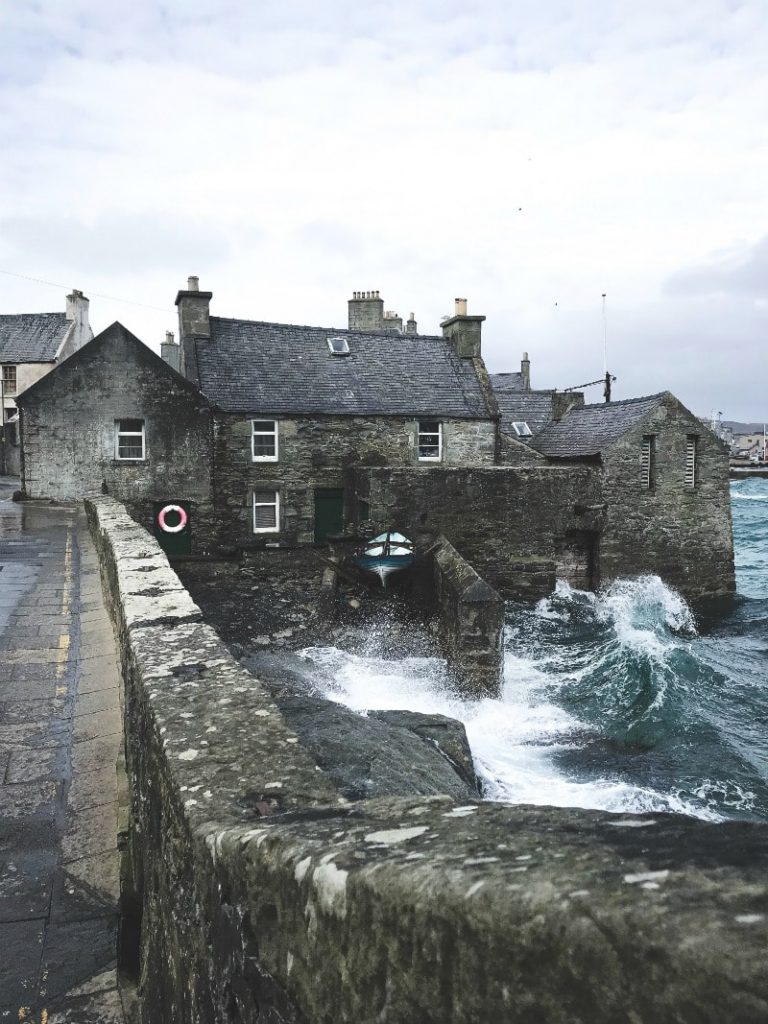
I get often asked about the story of lodberries, especially when I post photos of these iconic buildings on Instagram. It’s my favourite area of Lerwick and I always wonder about the history and function of these beautiful buildings as I walk past them too. So I asked a local historian and author of several interesting books on Lerwick’s history Douglas Sinclair to share the story of lodberries with us.
And the great news is Douglas has agreed to write about various aspects of Lerwick’s history for the Shetland Wool Adventures blog on a regular basis so if there’s anything that interests you in particular you can let me know. And so you don’t miss out on any of the posts you can also subscribe to my newsletter.

Lodberries are an integral and indeed unique feature of Lerwick’s waterfront. They stand proudly in the sea and early guidebook writers gave the town the fanciful title of “The Venice of the North” despite only having a vague resemblance to that iconic city.
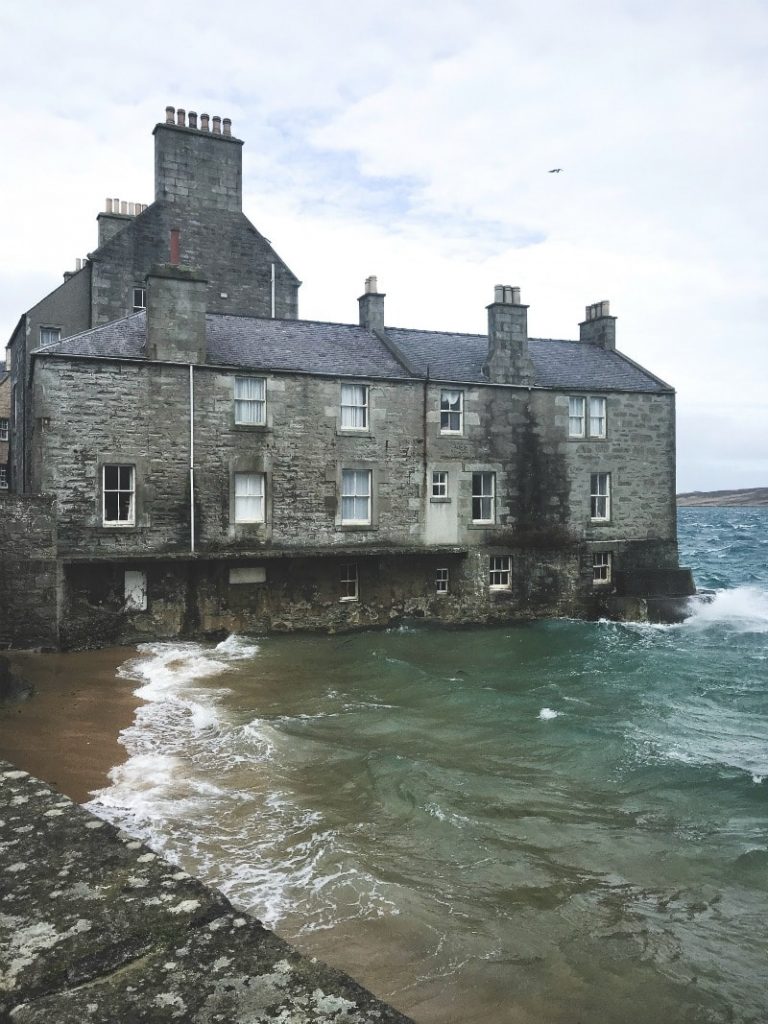
The word lodberry derives from Old Norse, hladberg, a landing rock, but in the Lerwick context it applied to a stone store built out into the sea, at which goods could be directly transferred to or from vessels and boats. Other lodberries consisted of two stores with a courtyard in between with an opening in the wall facing the sea. Merchants had them built as a convenient means of unloading supplies and goods, which had been transported by sea in the days before public piers were built. Lodberries had another purpose too – namely to facilitate the covert practice of smuggling Dutch gin, tobacco and tea. The merchants who lived on the landward side of Commercial Street had tunnels built from their lodberries, with whalebone roofs, to exit either in their house or a skilfully concealed outlet in a convenient garden.
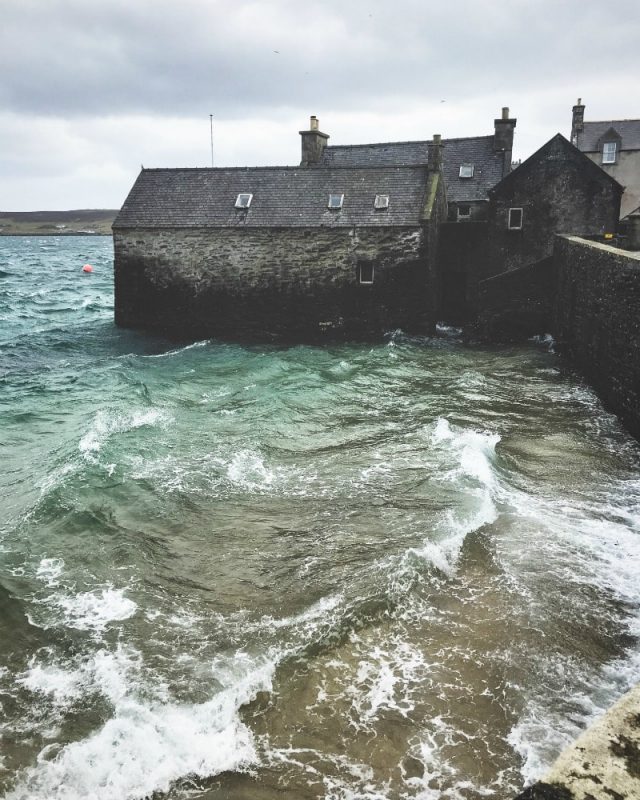
The first lodberry was built about 1730 by Patrick Scollay at the back of his house at south Commercial Street. By 1814 there were twenty-one, along with several small piers, that stretched along the waterfront from there to where Harry’s Department Store and Westside Pine shop is now situated.
Work commenced on creating the Esplanade and Victoria Pier in 1883 with completion by 1886. As a consequence the small piers were no more. Lodberry buildings were retained but their contact with the sea was lost. Some were converted and today, for example, Tait’s Lodberry is in fact the Thule Bar and Grieg’s Lodberry is the popular Peerie Shop and Cafe.
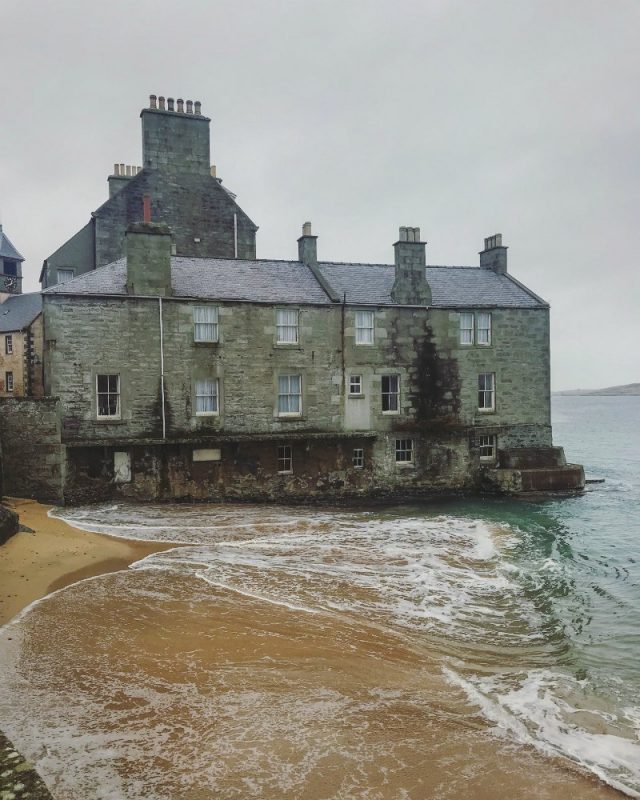
Those situated at the south end of the town however stand in the sea as they have always done. Three former lodberries are incorporated into the Queens Hotel.
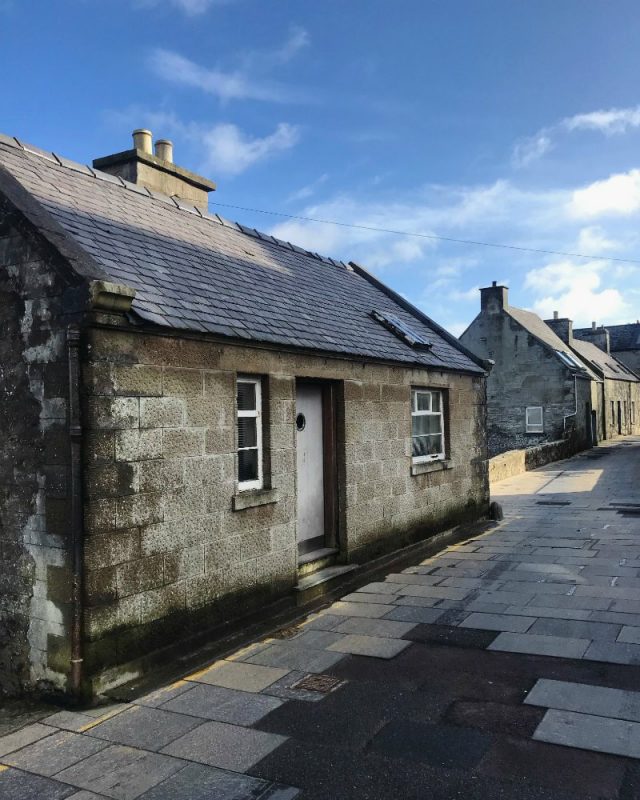
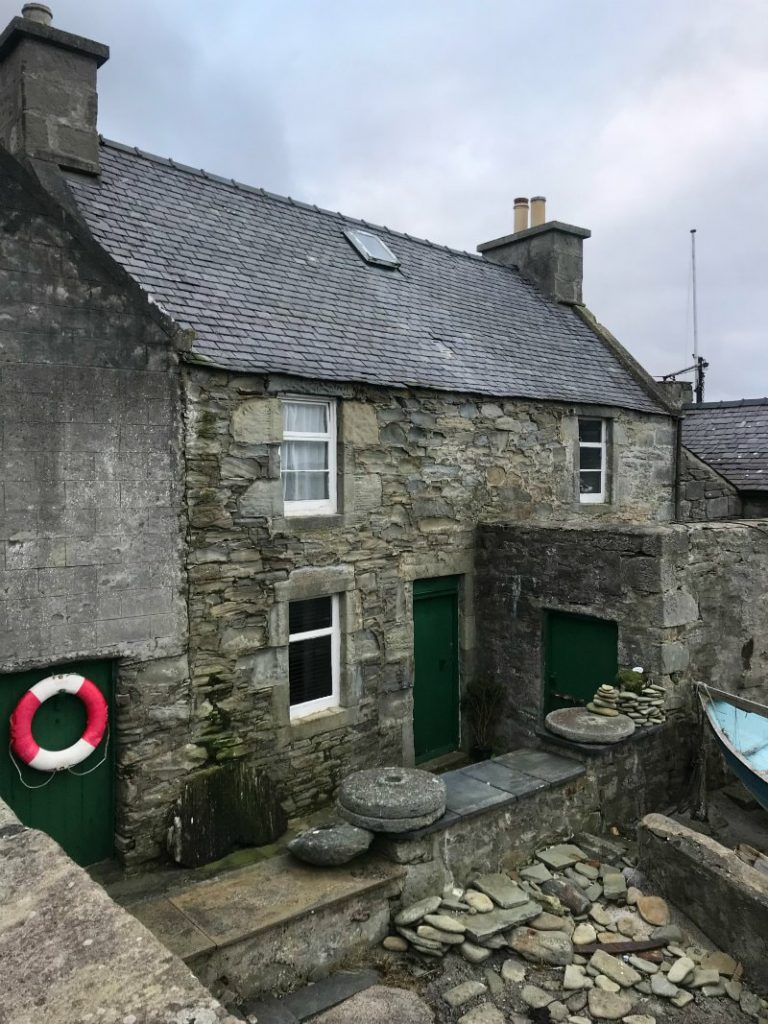
The neighbouring lodberry named “The Lodberrie” is virtually unchanged since its construction about 1772 by a merchant named George Linklater. Still surrounded by the sea on three sides, it stands between Bain’s Beach and the Craigie Stane. It was described as having steps leading down to a boat noost, (Old Norse naust- a boat shed or dock), at the Craigie Stane with an entrance leading to a kitchen and office; a store for boats and gear; a wet fish store; also an area for storing masts and spars. North, east and south facing sea doors allowed the transfer of cargo to and from boats at all times depending on the tides. At Commercial Street level there was a shop above a cellar, leading to a parlour, bedroom, a sail loft with dry goods store and a skeo, (a hut for wind-drying fish and meat).
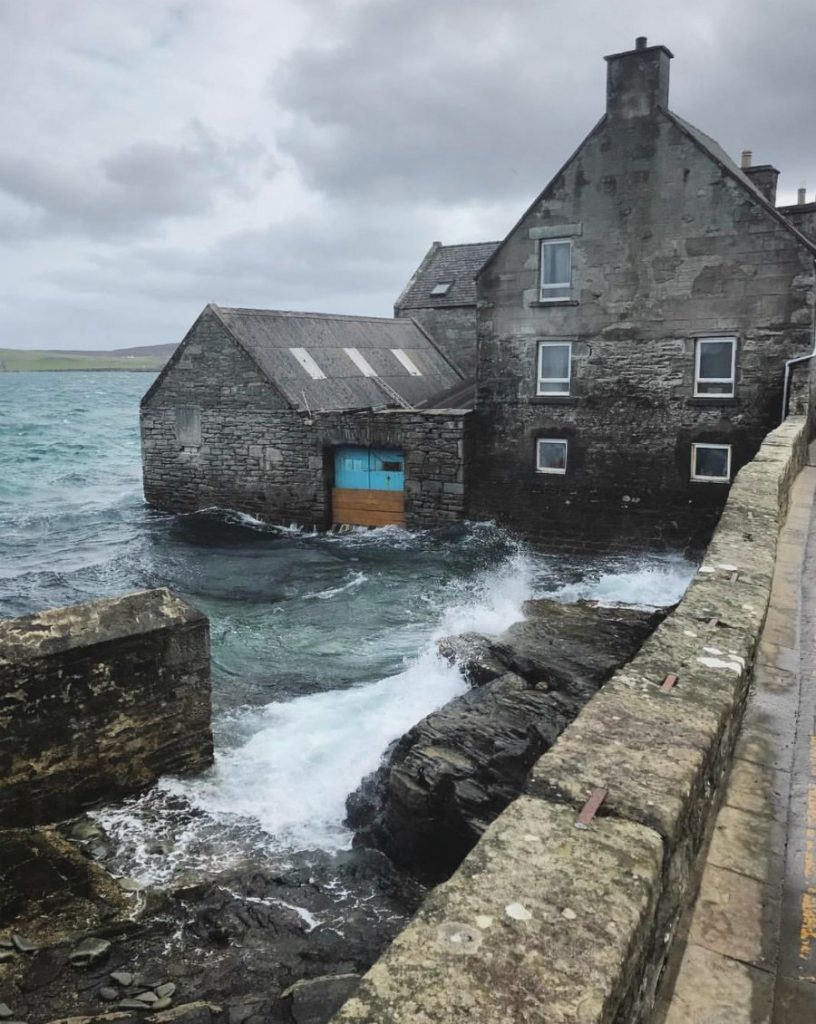
It was said that Dutch fishermen used to come ashore here in the late 19th century to obtain drinking water from the Draw Well that was at one time situated nearby. They then rolled their water barrels down past the Craigie Stane from where they loaded them directly on to their vessels.
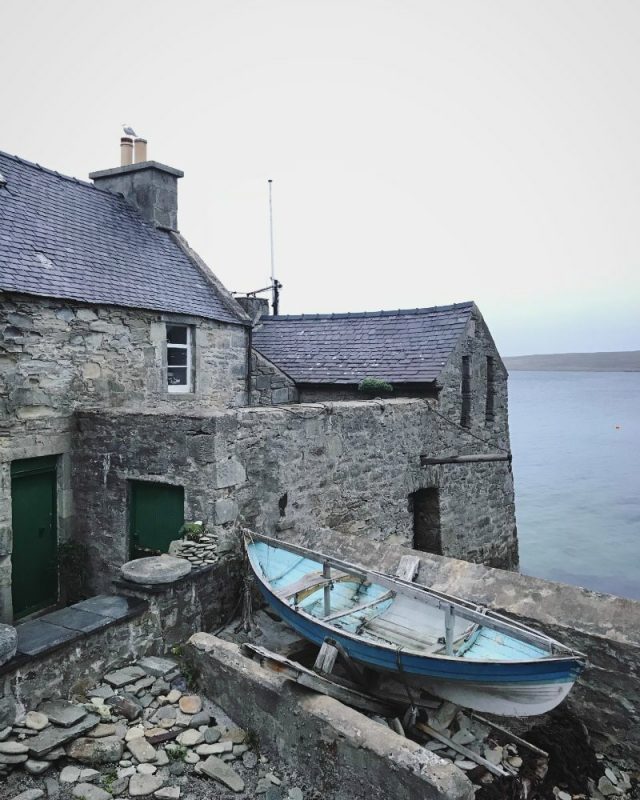
Over the years “The Lodberrie” changed hands several times and was used for various functions. At the present time it is a private residence and is now a Class A listed building.
It has become well photographed, popular tourist attraction following the screening of the “Shetland” crime series on television. “The Lodberrie” is portrayed as the fictional home of Jimmy Perez, the main character.
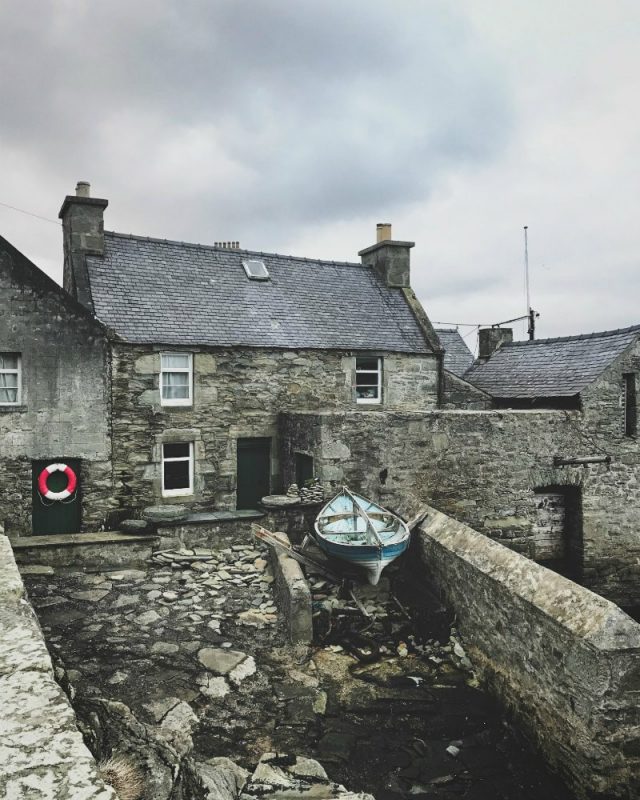
The everlasting attraction of the lodberries can be summed up by poet Laurence J. Nicolson who wrote in 1894 –
Lodberries lie like anchored ships
and they are anchored well,
Ah, if their oaken doors were lips
What stories they could tell.
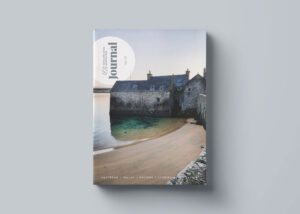
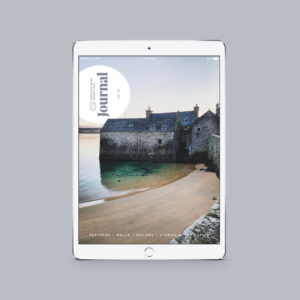

I am always fascinated by buildings built IN the sea, like these and lighthouses! HOW were they built???
Maybe they were built by constructing a coffer (sp?) dam around the area and draining the water inside temporarily?
I rented a room off that side door from Tammy & Muriel Moncrieff. 1980-81. That is quite apropos for your site as Muriel was a renowned knitter of Shetland sweaters. When the Queen came to Shetland for official opening of Sullom Voe Oil Terminal Muriel knitted 20+ sweaters for the Shetland fiddlers. She and Tammy were invited to a reception on Britannia. And came home with some great stories and memories.
This is fascinating to me! My great-grandfather came to Canada from Shetland, John Linklater Laurence. I’ve recently been watching the TV series and found the scenery captivating, and the Lodberrie fascinating and beautiful. Here I am looking for more info on this structure – lo and behold, my ancestor, George Linklater, built it! I am so thankful to have come across this blog. I am looking forward to learning more about Shetland.
Douglas Sinclair’s Old Lerwick looks like it would be a great read. But I can’t find any seller willing to ship it to Canada if I were to buy it. Is there any way for a Canadian to get this book?
I must admit when I first stood and looked at the Lodberries, I thought to myself “Venice of the North”! But I wasn’t too serious about it.
Hello John Laurence! If you email me: jamesmills25 @ aol.com then I will buy you a copy and post it to you! I am in Glasgow, Scotland. Just Mail me with your address!
Thank you for this wonderful information. Lovely pictures.
I just want to go there and live out the rest of my days!
I visited the beach beside the Queens Hotel regularly in late September 2022 to have a swim if others were doing do. At my age (79) I will not swim alone. My wife and I were privileged to be shown around the bar of the Queens Hotel which is ready to open but as I understand, not yet economic to do so. Ironically at a later date my wife and I visited Prussia Cove in Cornwall and there were many swimming so in I went. But before I did I asked a swimmer coming out if it was cold. She smiled and said ‘Fresh’. I had no togs with me or towel so I went in with undies and borrowed a towel. I asked the lender where I could go to privately remove my wet undies, dry and dress. He said ‘behind us at the back of the beach – if anyone looks, it’s their problem’.